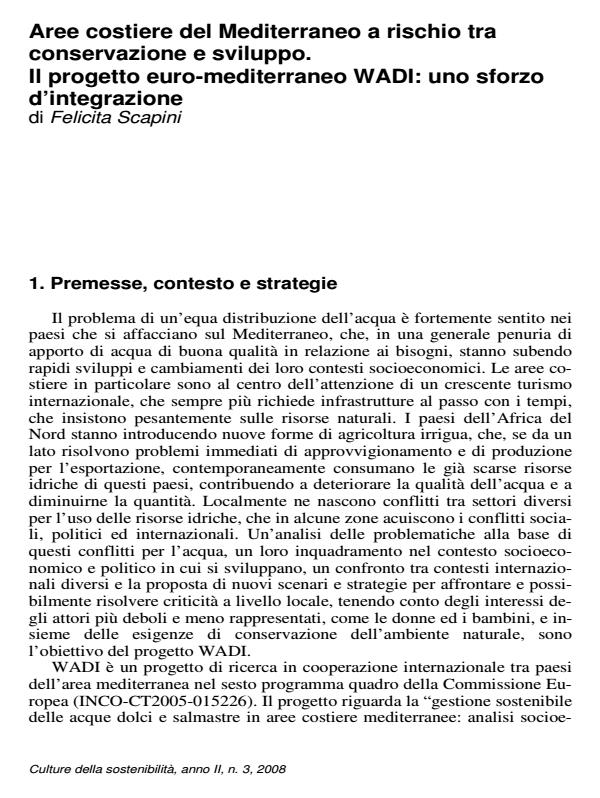Aree costiere del Mediterraneo a rischio tra conservazione e sviluppo. Il progetto euro-mediterraneo WADI: uno sforzo d’integrazione
Journal title CULTURE DELLA SOSTENIBILITA '
Author/s Felicita Scapini
Publishing Year 2008 Issue 2008/3
Language Italian Pages 10 P. 117-126 File size 106 KB
DOI
DOI is like a bar code for intellectual property: to have more infomation
click here
Below, you can see the article first page
If you want to buy this article in PDF format, you can do it, following the instructions to buy download credits

FrancoAngeli is member of Publishers International Linking Association, Inc (PILA), a not-for-profit association which run the CrossRef service enabling links to and from online scholarly content.
Aree costiere del Mediterraneo a rischio tra conservazione e sviluppo. Il progetto euro-mediterraneo WADI: uno sforzo d’integrazione ABSTRACT: Mediterranean coastal areas are subject to ever increasing pressures by urbanization. They share environments of high natural and cultural values, a common heritage of the countries. The scarce fresh water reservoirs in these areas are often subject of conflicts for the use of the natural goods. Rarely a compromise is achieved that takes into account the needs of all the concerned actors, particularly the week components of the local populations and the natural ecosystems. The euro-Mediterranean project WADI (INCO-CT2005-015226, 6th framework programme of the European Commission) has analyzed some complex real cases of water bodies around the Mediterranean with scarce fresh water supply and subject to various pressures, both in the north (Italy and Spain) and south (Egypt, Tunisia and Morocco). We have adopted an integrative and participatory approach and conducted ecological and socioeconomic research, and present here the first results obtained.
Felicita Scapini, Aree costiere del Mediterraneo a rischio tra conservazione e sviluppo. Il progetto euro-mediterraneo WADI: uno sforzo d’integrazione in "CULTURE DELLA SOSTENIBILITA '" 3/2008, pp 117-126, DOI: